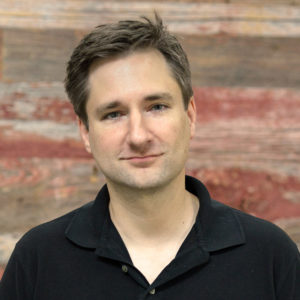Here at NewBoCo we have a pretty simple goal: computer science education in every single school in Iowa. We support tech education to give Iowans of all ages the skills necessary to thrive in an increasingly technical world. That’s why we partnered with Code.org, a national nonprofit, to offer free professional development workshops to train current K-12 teachers how to teach computer science.
“Computer science is used in more and more industries including agriculture, finance, insurance, and manufacturing, some of Iowa’s top employers,” NewBoCo K-12 Education Coordinator and Code.org Program Manager Samantha Dahlby said. “Even if students don’t become computer scientists, having a basic knowledge of the field is important to their success in any future career.”
The first year of this program in 2017-2018, we reached more than 1,700 students through training just 32 teachers, and we will more than double the number of educators participating for 2018-2019 to almost 80. To build on the success of the first year of this program, we brought on an intern this summer to help us get a better picture of computer science education statewide.
“Having and idea of how many schools don’t yet offer computer science can help us as a state to focus funding where it is needed,” Dahlby said. “It also gives us an idea of where computer science is offered, and which schools may be looking to add additional computer science opportunities like more advanced high school courses.”
NewBoCo K-12 Education intern Jailyn Seabrooks, a sophomore at Simpson College, has been researching and reaching out to school administrators to determine which schools offer computer science courses and which don’t.
“As a college student it is always rewarding to be able to experience careers that I could one day have, and interning at NewBoCo has given me an opportunity to research computer science in a way I wouldn’t have gotten anywhere else,” Seabrooks said. “This internship has given me the chance to explore a career path I would have never thought about.”
In 2016, almost 75% of schools in Iowa did not teach computer science. With the support of Dahlby, Seabrooks is working on figuring out what that statistic is today by reaching out to principals. She’s asking them to take a quick, 3-minute survey from Code.org about their school and computer science education.
“It has been surprising to learn just how much of the world revolves around computer science. I always thought computer science was only for people who wanted to build computers,” Seabrooks said. “Even though I might not end up as a programer or engineer, knowing how to navigate simple code and having a little knowledge of how to make computers do what I need them to do has been helpful.”
To better show what this data looks like in Iowa, Seabrooks and Dahlby brought in reinforcements. They pitched their idea of a “Computer Science for Iowa” website to DeltaV Code School – Iowa’s premier adult code school – Code 201 students for their final project. One of the teams took on the project, and the resulting site makes this data accessible to all Iowans.
“The week-long project is just the start of an ongoing effort to visualize which school districts have 100 percent K-12 implementation of computer science, which are in progress, and which need more support in implementing curriculum,” Dahlby said. “This is particularly timely as the Iowa Department of Education recently announced a Computer Science Professional Development Incentive Fund to help districts increase their computer science offerings.”
We’re excited about the progress that Jailyn, Samantha, and the DeltaV team have made this summer, but there is still more work to be done. Samantha is gearing up to train double the amount of educators to teach computer science. There are still more than 700 schools – more than half of the K-12 schools in Iowa – that haven’t responded to the survey yet. We need your help. Please contact your local school administration and ask them to fill out the survey.

